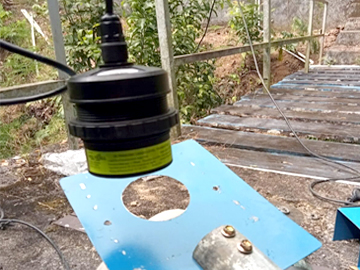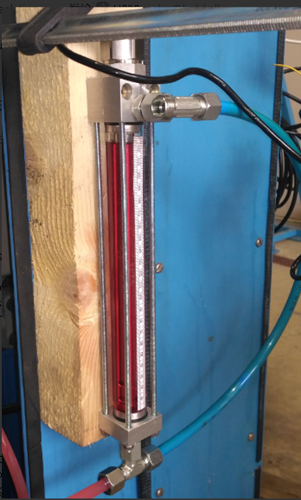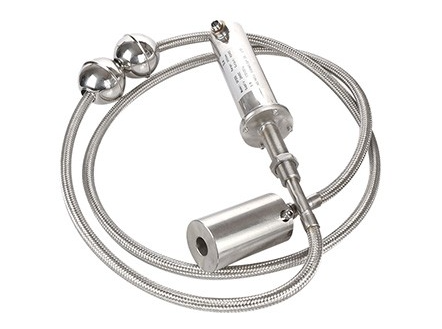Top 5 Level Sensors for Storage Tanks
After testing all the common level monitoring instruments on the market, the top 5 level sensors are as follows:
–Hydrostatic level sensors: Lowest price and widest measuring range
–Radar level sensors: highest accuracy
–Ultrasonic level sensors: most cost efficient among non-contact measurement
–Capacitive level sensors: best for viscous liquids
–Magnetostrictive level sensors: Most liquid compatible
Note that the best level sensor depends on the specific application and demands. However, our top 5 almost covers all the applications. You can find one among them for your application. They ensure that:
–Accurate measurement
–Reliable values
–Wide application range
–Cost-effective
Our selection of level sensors are compatible with almost all the existing systems and users can use them with their own systems and other digital controllers and display instrument.
Read our full article below to find out everything you need to know about the best level sensors and how to choose the right level sensor for you.
What is the best level sensor? It’s a tough question to answer given the number of options we have available on current market. To help you find the best one, we list the most common level sensors.
Each type of level sensor has its own unique advantages.

Following we will introduce each in detail, including the working principle, application areas, advantages, limitations and whether is hard to install.
Hydrostatic Level Sensors
How does a hydrostatic level sensor work?
A hydrostatic level sensor, also known as a submersible level sensor, is used to measure the level of liquids by utilizing the principle of hydrostatic pressure. It consists of a pressure-sensitive element submerged in the liquid, typically a diaphragm or a pressure transducer. The liquid’s height exerts pressure on the element, which is converted into an electrical signal proportional to the liquid level.

Applications of Hydrostatic Level Sensors
Hydrostatic level sensors are common in various industries. Some common applications include:
–Tank level monitoring: commonly in water tanks, fuel tanks, chemical containers and so on.
–Industrial process control: such as oil and gas, chemical processing, and pharmaceuticals.
–Environmental monitoring: like groundwater monitoring, river or lake level measurement, and flood monitoring.
–Marine and offshore: Hydrostatic level sensors are used in marine vessels, offshore platforms.
Advantages of hydrostatic level sensors
Hydrostatic level sensors offer several advantages and some key advantages include:
–Accuracy: Hydrostatic level sensors provide highly accurate and precise measurements.
–Wide Range: These sensors can measure liquid levels over a wide range, from small tanks to large reservoirs, Holykell submersible level sensors can reach up to 500m and more, for example, 1000m, by customized.
–Compatibility: Hydrostatic level sensors are compatible with a wide range of liquids, including water, oils, fuels, chemicals, and more.
–Durability: These sensors are often designed to withstand harsh conditions and are constructed with robust materials that can resist corrosion, temperature variations, and pressure fluctuations, ensuring long-term reliability.
–Low Maintenance: Hydrostatic level sensors typically have low maintenance requirements, reducing downtime and costs associated with sensor upkeep.
–Easy Installation: They are relatively easy to install and can be mounted externally or immersed directly into the liquid, simplifying integration into existing systems.
–Real-time Monitoring: Hydrostatic level sensors provide real-time monitoring, enabling prompt response and intervention in critical situations such as overflow or leakage, enhancing safety and preventing damage.
–Cost-effective: Compared to other level measurement technologies, hydrostatic level sensors often offer a very cost-effective solution.
Limitations of hydrostatic level sensors
Hydrostatic level sensors assume a consistent liquid density, which may not be accurate in applications where the density of the liquid changes significantly.
And they measure liquids only not solids or slurry.
Installation of hydrostatic level sensors
It is quite easy to install the submersible level sensors. For static tanks, we can directly place the sensor into the liquid; for flowing liquids, we can place it in a steel pipe that is usually fixed in the water.
Radar Level Sensors
How does a radar level sensor work?
A radar level sensor operates based on the principle of time-of-flight. It emits electromagnetic waves in the form of radar pulses that travel at the speed of light. When these waves encounter a surface, such as a liquid or solid material, a portion of the energy is reflected back towards the sensor. The radar measures the time it takes for the emitted pulse to travel to the surface and return as the reflected signal. By knowing the speed of light, the sensor can calculate the distance between itself and the surface based on the time difference.

Applications of radar level sensors
Radar level sensors are commonly used across various industries due to their versatile and reliable performance, including:
–Tank Level Monitoring in storage tanks, including fuels, chemicals, water, and other liquids.
–Water and Wastewater Management: such as in water treatment plants, reservoirs, and pumping stations for preventing overflow or underflow situations.
–Food and Beverage Production: Radar level sensors are utilized in food and beverage industry during production processes, such as storing ingredients, mixing tanks, and product storage.
–Oil and Gas Industry: They are extensively used in the oil and gas sector for level measurement in storage tanks, pipelines, and offshore platforms.
–Mining and Minerals: They assist in measuring levels of ores, minerals, and slurry in mining applications.
–Pharmaceuticals: Radar level sensors find use in pharmaceutical production, where precise monitoring of liquid levels is necessary during various stages of the manufacturing process.
–Environmental Monitoring: such as rivers or lakes, flood monitoring, and stormwater management.
Advantages of radar level sensors
Radar level sensors offer several advantages that contribute to their widespread use in various industries, typically including:
–Non-Contact Measurement, allowing them to measure levels without physically touching the substance being measured, which eliminates the risk of sensor contamination or interference with the material, making them suitable for challenging and corrosive environments.
–High Accuracy: Radar level sensors provide highly accurate and reliable measurements, even in demanding conditions.
–Wide application: Radars can measure levels of various substances, including liquids, solids, and powders from very short distances to several tens of meters, suitable for both small and huge tanks.
–Compatibility: Radar level sensors are compatible with different types of materials, including liquids with varying dielectric constants, foaming liquids, and materials with low reflectivity.
–Easy Installation: These sensors are typically easy to install and require minimal setup. They can be mounted on top of tanks or vessels, and some models offer flexible installation options, simplifying integration into existing systems.
–Low Maintenance & long service life: Radars generally have low maintenance requirements, reducing downtime and costs. They can work for a long time and withstand harsh industrial environments. They are resistant to temperature variations, pressure changes, dust, vapors, and agitated surfaces.
–Safety: Radars contribute to improved safety by providing accurate level measurements, preventing overfills, spills, and equipment damage. They help ensure compliance with safety regulations and prevent hazardous situations.
Limitations of radar level sensors
Compared to other level sensors, radar level sensors can be relatively more expensive.
Installation of radar level sensors
The difficulty of installing radar level sensors can vary depending on the specific application and installation requirements.
Some radar installations can be relatively straightforward, others may require expertise and experience to ensure proper setup and performance. Follow the manufacturer’s installation guidelines.
Ultrasonic level sensors
How does a ultrasonic level sensor work?
An ultrasonic level sensor works based on the principle of sound waves. The sound waves travel through the air or a medium and are reflected back when they encounter a surface, such as a liquid or solid material. The sensor emits the ultrasonic waves and a receiver that detects the reflected waves. The time it takes for the sound waves to travel to the surface and back is measured. Since the speed of sound is known, the sensor can calculate the distance between itself and the surface based on the time taken for the waves to travel.

Applications of ultrasonic level sensors
Ultrasonic level sensors common applications include:
–Liquid Level Monitoring: especially in tanks, reservoirs, and pipelines in industries such as water and wastewater management, chemical processing, and oil and gas.
–Bulk Solid Measurement: bulk solids, such as powders, grains, and granular materials, in silos, hoppers, and storage bins, commonly in industries like agriculture, mining, and food processing.
–Distance measurement: ultrasonic level sensors can measure both level and distance.
–Open Channel Flow Measurement: Ultrasonic level sensors are effective in measuring the flow of liquids in open channels, such as rivers, streams, and channels. They help monitor water flow rates, calculate discharge volumes, and support environmental and hydrological studies.
Advantages of ultrasonic level sensors
Ultrasonic level sensor key advantages:
–Non-Contact Measurement: non-contact principle makes them ideal for applications where direct contact with the media is not feasible or desirable. This eliminates the risk of sensor contamination and minimizes maintenance requirements.
–Wide Range Capability: Ultrasonic level sensors can measure levels of liquids, solids, powders, and granular materials over a wide range, making them suitable for both small-scale and large-scale applications.
–High Accuracy: Ultrasonic level sensors provide reliable and accurate level measurements.
–Easy Installation and Configuration: Ultrasonic level sensors are generally easy to install and configure.
–Cost-Effective Solution: Ultrasonic level sensors often provide a cost-effective solution compared to other level sensors. They offer a good balance between performance, reliability, and affordability.
Limitations of ultrasonic level sensors
Ultrasonic sensors can be affected by environmental conditions such as temperature, humidity, atmospheric pressure and objects or obstructions in the path of the ultrasonic waves, such as pipes, mixers, or structural elements.
Installation of ultrasonic level sensors
It is easy to install them but make sure following the manufacturer’s instruction.
Capacitive level sensors
How does a capacitive level sensors work?
A capacitive level sensor works based on the principle of changes in capacitance. The sensor measures the capacitance between these electrodes, which varies with the level of the substance. When the substance surrounds the probe, it forms a dielectric material between the electrodes. The dielectric constant of the substance affects the capacitance value. As the level of the substance changes, the dielectric material’s extent between the electrodes changes, resulting in a corresponding change in capacitance.

Applications of capacitive level sensors
Here are some common applications:
–Liquid Level Monitoring: in tanks, reservoirs, and pipelines in industries such as water and wastewater management, chemical processing, oil and gas, food and beverage, and pharmaceuticals.
–Solid Level Measurement: such as powders, granules, and bulk solids, in hoppers, silos, and storage containers.
–Interface Detection: Capacitive level sensors are capable of detecting interfaces between different liquids or solids within a vessel. This enables applications such as detecting the oil-water interface in oil separators or monitoring the settling of solid particles in sedimentation tanks.
Advantages of capacitive level sensors
Capacitive level sensors offer several advantages including:
–Versatility: Capacitive sensors are suitable for a wide range of substances, such as chemicals, pharmaceuticals, food, beverages, water and wastewater, especially capable of measuring viscous liquids, which might challenge other level sensors.
–High accuracy and sensitivity: Capacitive sensors detect even small changes in capacitance with fast response time.
–Wide temperature range: Capacitive level sensors can operate across a wide temperature range, suitable for applications involving extreme temperatures or temperature fluctuations. Holykell model HPT621 can measure medium of -40~300℃.
–Easy installation and maintenance: Capacitive level sensors are generally easy to install and require minimal maintenance.
Limitations of capacitive level sensors
Capacitive sensors require a sufficient difference in dielectric constant between the substance being measured and the surrounding medium. Transparent or non-reflective surfaces may not provide adequate signal reflection.
Installation of capacitive level sensors
It is not difficult to install capacitive sensors, and they can be mounted externally or internally on tanks or vessels.
Magnetostrictive level sensors
How does a magnetostrictive level sensor work?
A magnetostrictive level sensor uses the interaction between magnetic fields and mechanical strain. It has a probe with a magnetostrictive wire and a float with a magnet. An electrical current generates a magnetic field along the wire. When it reaches the float’s magnet, a magnetic field is created. This interaction causes a mechanical wave, known as a guided wave, to travel along the wire. The sensor’s head contains an electronic module with a magnetic pickup that detects changes in the magnetic field as the wave reaches it. The time between the current pulse and the wave’s arrival determines the float’s position, indicating the liquid level.

Applications of magnetostrictive level sensors
Magnetostrictive level sensors are extensively used in oil and gas, chemicals, water, wastewater, pharmaceuticals and biotechnology. Typical example is in trucks for real-time monitoring fuel level and preventing overflows or oil theft.
Advantages of magnetostrictive level sensor
Magnetostrictive level sensors offer several advantages including:
–High Accuracy: Magnetostrictive level sensors provide highly accurate and stable level measurements. Holykell model SP300 offers a leak detection accuracy of 0.375 liters per hour.
–Continuous Level Monitoring: These sensors offer continuous level monitoring, providing real-time updates on the liquid level.
–Compatibility with Different Liquids: They are compatible with a wide range of liquids, including water, oils, chemicals, and fuels, regardless of the liquid’s properties, conductivity, or dielectric constant. This versatility allows for their use in diverse industrial applications.
–Calibration: calibration process is extremely simple. It does not require on-site operation and can be remotely calibrated using a computer with the Hart protocol. In the case of recalibration or forgetting the calibration values, there is no need for revalidation.
Limitations of magnetostrictive level sensors
Magnetostrictive level sensors typically require a relatively large probe that extends into the tank. This can limit their use in applications where space is restricted or where the tank design does not allow for the installation of a long probe.
Installation of magnetostrictive level sensor
Its installation typically requires some technical expertise and careful consideration. Proper installation involves ensuring the correct positioning of the probe, float, and sensor head.
FAQs
1. How do I choose the right level sensor for my application?
Choosing the right level monitoring system depends on various factors such as the liquid being measured, the required accuracy, the environmental conditions, and the range and so on. Refer to our previous articles.
2. Can level sensor be integrated with existing control or automation systems?
Yes, many level monitoring systems are designed to be compatible and integrate seamlessly with existing control or automation systems. They can communicate using standard protocols, allowing for easy integration and data exchange.





